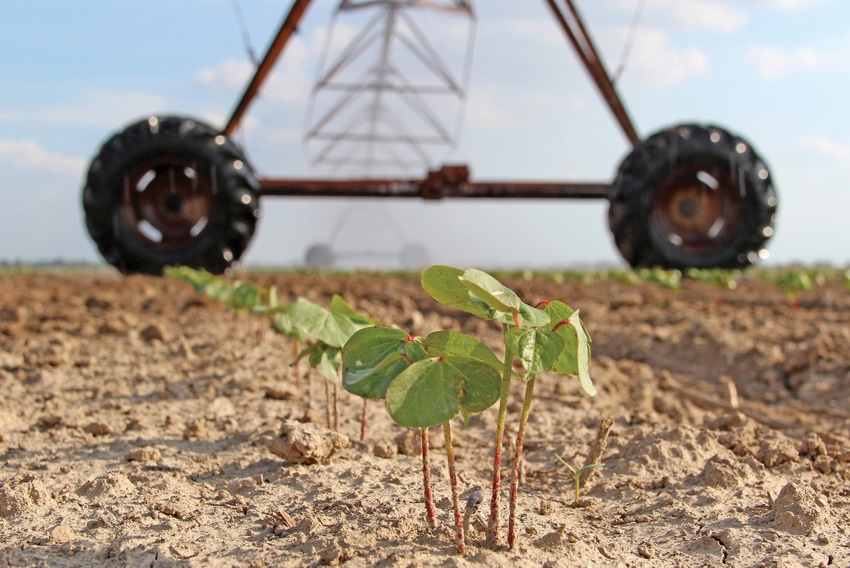May 11, 2012

Warm spring weather sent Mississippi cotton farmers to the fields as early as the first week of April, and cotton stands are ahead of normal and looking good.
As of May 6, the U.S. Department of Agriculture’s Agricultural Statistics Service estimated the state’s cotton was 68 percent planted and 45 percent emerged. The five-year average for this same date has the crop just 31 percent planted and only 12 percent emerged.
Darrin Dodds, state cotton specialist with the Mississippi State University Extension Service, said the bulk of Mississippi’s cotton crop is typically planted from the third week of April to mid-May.
“This year, we’re pretty far ahead of where we usually are,” Dodds said. “A lot of folks jumped out in early April and got going with their cotton planting.”
Rains did not significantly slow down the early-planting process, but since late April, a lack of rain has forced some changes.
“Growers are either putting the seed deeper to get to the moisture in the ground, or they are planting it like normal and hoping for rain,” Dodds said.
Cotton that is planted deeper than normal can face a challenge at emergence, especially if a heavy rain followed by sunny weather causes the ground to crust over.
“Cotton can be damaged trying to emerge from the soil,” Dodds said. “Cotton can’t physically push through crusts as well as corn and soybeans, and some growers are putting three or four seeds in a hill to increase pushing power.”
The March 30 USDA planting intentions report predicted 580,000 acres of cotton in Mississippi this year, an 8 percent drop from 2011. Dodds said he expects the number to be substantially lower than that.
“Soybeans are $15 a bushel, and cotton is around 80 cents a pound. Soybeans are cheaper to grow because they don’t have cotton’s pest management problems,” Dodds said. “Cotton prices are nothing to scoff at, but $15-a-bushel soybeans are hard to pass up.”
John Michael Riley, Extension agricultural economist, said current Delta prices for cotton are just under 80 cents a pound. December futures are trading at just over 83 cents a pound.
“Cotton prices have been dropping since mid-February,” Riley said.
Numerous factors affect cotton prices, including fluctuations in the U.S. dollar and recent rains in west Texas, a significant cotton-producing area, brought optimism about this year’s cotton crop.
“All of the crops have been ahead of schedule nation-wide, and this is expected to boost yields — thus supply. Prices have dipped because of that,” Riley said. “Cotton tends to follow general economic conditions more than other agricultural commodities, and the U.S. economy has slowed a bit from the first quarter of 2012.”
Despite there being few positives on the horizon for marketing the 2012 cotton crop, Dodds said it is performing well to date.
“The biggest issue some growers have had is trying to get their residual herbicides applied before the cotton emerged,” Dodds said. “Either windy conditions kept them from spraying or they were trying to get other acres planted, but these herbicides must be applied before the cotton emerges.”
Cotton not treated with residual herbicides before the plants emerge does not have many weed control options afterwards.
“If you’re fighting herbicide-resistant pigweeds and you didn’t get a residual herbicide on your fields, you’re kind of behind the eight ball,” Dodds said.
You May Also Like




